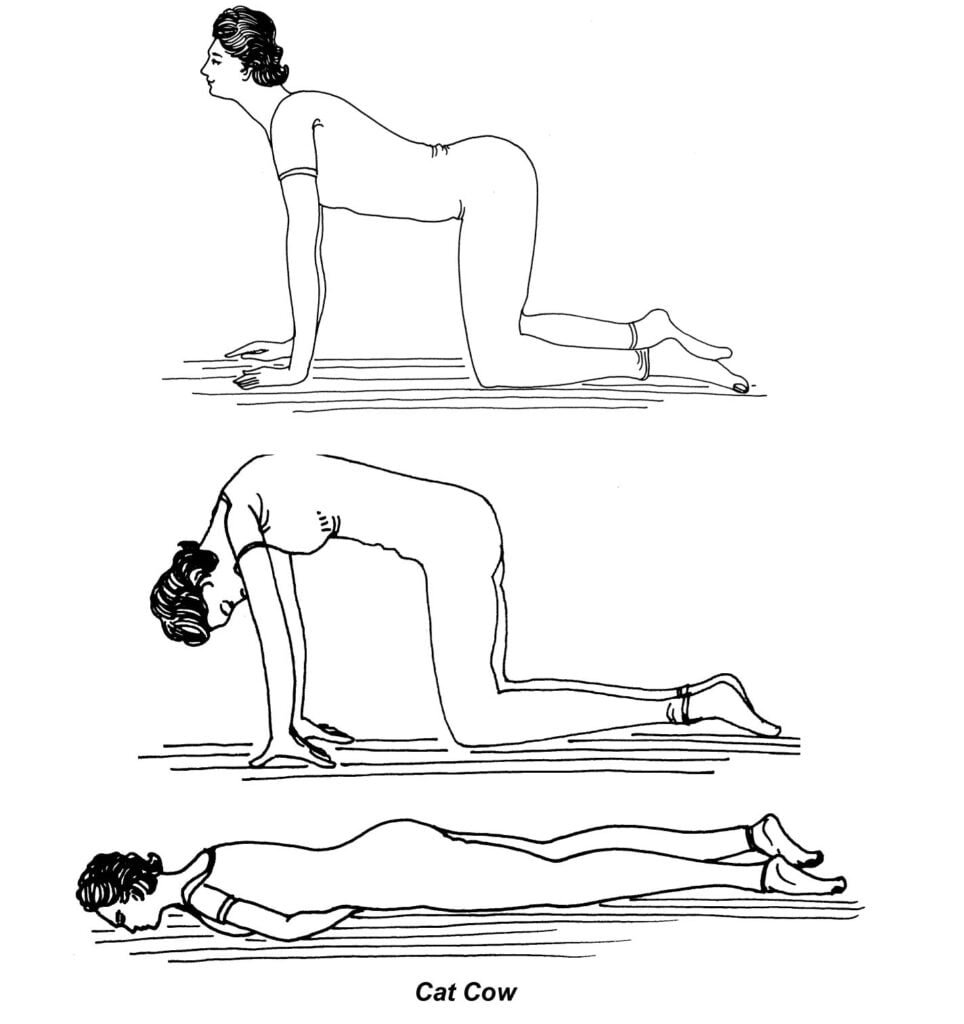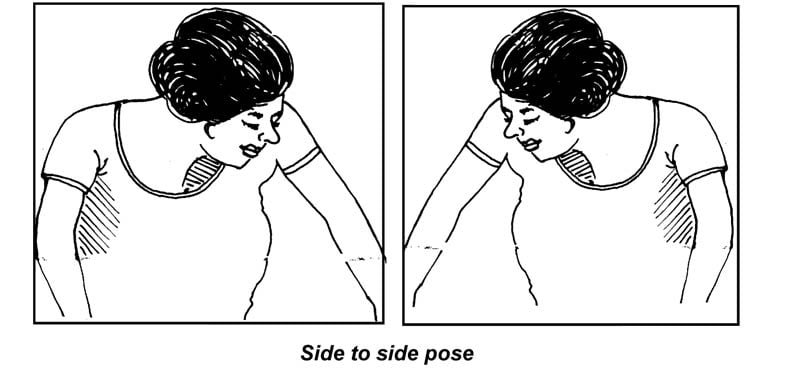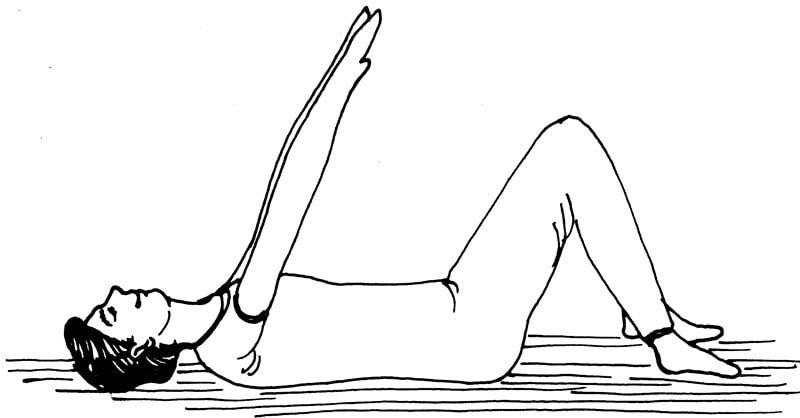The seven chakras are specific vital centers in the body that influence different aspects of ourselves. They are energy sources that govern our physical, emotional, mental and spiritual well being. Therefore, they provide a foundation for the development of personal power.
All of the Acupressure meridians run through these centers and most of the pressure points relate specifically to one of the chakras. Many of the traditional associations of Acupressure points correspond to the characteristics of the nearest chakra. Since chakras are so related to Acupressure, being aware of them aids in one’s understanding of the dynamics of Acu-Yoga.
From a neuro physiological perspective, the chakras are represented as nerve plexuses from the spinal column and endocrine glands that connect with the internal organs. At the base of the spine is the first chakra, which is connected to the sacral plexus, the rectum, the prostate gland and the male reproductive organs. The second chakra, below the navel, is related to the prostatic plexus, the adrenal glands, the female reproductive organs and the kidneys. The third chakra is associated with the solar plexus, the spleen, the pancreas, the liver and the gall bladder. The fourth is called the heart chakra. It is connected to the cardiac plexus, the thymus gland and the pericardium. The fifth chakra relates to the thyroid gland at the level of the throat, which regulates the basal metabolism—the amount of energy used by the body at rest. The fifth chakra is connected by the vagus nerve and the cervical ganglion. The sixth chakra is associated with the pituitary gland, and the seventh chakra relates to the pineal gland.
Acu-Yoga uses the power of the breath to balance the chakras. In five minutes this can be accomplished by lengthening the respiratory process to four breaths per minute. These seven chakras are of central importance in Acu-Yoga practice. Each exercise works on a certain chakra, by flexing, stimulating, or stretching areas of the body. The following series of exercises works progressively from the first to the seventh chakra. By practicing this series of Yoga exercises you can systemically rebalance the energy in each of these vital centers.
First Chakra
The first chakra is connected to survival, where the main motivation is to protect oneself as a separate being. Therefore, developing the first chakra means developing a sense of security in life. When you are insecure, you tend to cling to a love relationship, an occupation, a religion, or whatever. People who have trouble with their first chakra may not have developed a strong identity. They may not have found a purpose in their life. If they are too yin they might be ungrounded. If they are very yang they might be too attached to the material things around them, generally self indulgent or preoccupied with satisfying their own needs.
Here are two exercises that work on this energy centre for developing stability, security, and balance.
Body Drops : This exercise works on Governing Vessel 1, an Acupressure point at the base of the spine.

1. Sit on the floor with your legs stretched out in front of you.
2. Support yourself by placing your hands on the floor behind you.
3. Arch your buttocks up and bounce gently on the base of the spine.
4. Repeat step number three, eight times.
Stretch Pose (variation) : Traditionally, this pose has been used for conditions involving haemorrhoid, impotency, and constipation. It works on eliminatory energy. This exercise also stretches out the sciatic nerve, one of the largest nerves in the body, important for developing physical energy. Do the exercise on both sides, emphasizing the stretch on the tightest side.

1. Sit on the floor with your leg stretched out in front of you. Bend your right knee, and place your right heel between your genitals and your rectum. This puts pressure on Conception Vessel 1.
2. Your left leg remains straight out in front of you. Grab hold of the left shin or ankle and inhale, straightening the spine.
3. Exhale, using your arm muscles to bring your forehead toward your left knee.
4. Continue for about a half minute on each side.
Second Chakra
The second chakra governs our impulses of creativity and sexuality. If this chakra is too yin a person might have sexual problems, such as impotency. If it is too yang, sexuality can dominate one’s life, so that sexual frustrations, thoughts, and fantasies are excessive. In either case, imbalances in the second chakra can lead to sexual problems.

In terms of other physical conditions, if the second chakra is too yin, then the abdominal area may be flabby, soggy, or generally weak. A person may also develop kidney or bladder weaknesses, and other urinary problems. If the second chakra is too yang, the muscles in the abdominal area will be constricted or tight and tension may accumulate in the lower back. The following exercises stretch and strengthen these areas to prevent such difficulties.
Cat Cow : This exercise works on points along the spine, including Governing Vessel 3,4, and 5. These points are called ‘The Gates of Life.’ Cat-Cow strengthens the second chakra, the lower back and the abdominal area.
1. Get on the floor on your hands and knees.
2. Inhale, arch your back, and raise your head up.
3. Exhale, round your back, and let your head drop down. Your back curves upwards.
4. Establish a smooth rhythm of inhaling head up, and exhaling, head down. Continue the exercise for about one minute.
Locust Pose : This is an excellent pose for menstrual problems and for indigestion. In this pose Spleen 12, 13, Stomach 29 and 30 are stimulated.

1. Lie on your stomach.
2. Make fists with your hands and place them under your groin area, with your chin or forehead resting on the floor.
3. With your feet together, inhale and raise your legs up off the ground. Begin breathing deeply with your legs stretched up for 30 to 60 seconds.
4. Then let your legs come down, rest your head on its side, and place your hands by your sides. Let yourself completely relax with your eyes closed, discovering the benefits.
Third Chakra
The third chakra is the power centre of the body. If there is a deficiency (excess yin) in a person’s third chakra, he or she may feel powerless. A person who is too yang, however, may have a tendency to be aggressive or greedy. The third chakra relates to the liver, gall bladder, stomach, and spleen. They help to regulate how centered we feel during the day in relation to our mental facilities and our ability to be self motivated. Good diet (including green vegetables) and daily exercise (such as jogging or swimming) help to develop this chakra.
Pit Pose : This posture massages all the internal organs that are related to the third chakra, and is for developing a balanced sense of personal power. Each time you exhale you will feel a pressure on Stomach 22, 23, 24, Kidney 17, 18, 19, and Conception Vessel 10, 11, 12 and 13. The Pit Pose is one of the best Yogic exercises for releasing overall body tension.
1. Remain lying on your stomach. Put your fists underneath the rib cage into the area of your stomach, between the navel and the base of the breastbone. Begin breathing long and deep.
2. Press your navel point towards the ground and your breathing will internally massage the abdominal area.
After one minute, relax with your hands by your sides.

Spiral Flexes : This exercise flexes the spine in both directions. It works on the third chakra, and also affects the fourth chakra. This is an excellent exercise for emotional balancing.
1. Sit on your heels with your hands on your knees. Slump down to curve your back.
2. Inhale, arch your back and stretch your chest up and out.
3. Exhale as you slump down. Continue for one minute.
Fourth Chakra
The fourth chakra relates to our capacity to love, to open up our hearts, and to give. If the heart centre is excessive (yang), then a person may be insensitive. If this chakra is deficient (yin), one may be hypersensitive, or feel emptiness within the heart cavity. When this chakra is blocked a person may appear to be cold, inhibited, or may exhibit passivity in his or her life. The fourth chakra governs joyfulness, and is the control centre for regulating the emotions. The following exercises benefit this chakra:
Flapping Wings : This exercise is helpful for constriction in the chest, difficulties in breathing cardiac problems and for reducing high blood pressure. The movement of this exercise stimulates the following points between the shoulder blades: Bladder 12, 14, 15, 16, 38, 40. These points are traditionally used for cardiovascular problems.

1. Stand, bringing your arms up until they are parallel to the ground. Have your palms facing out.
2. Stretch your arms back without bending your elbows so you feel a pressure in the shoulder blades. Keep bending your hands backwards and feel the pressure in your wrists. Inhale and raise your chest up and out.
3. Exhale and keeping your arms straight, bring your palms together in front of you, curving the spine forward.
4. Continue to inhale as your hands go back and exhale as they come forward for one minute.
Cross My Heart Pose : This Acu Yoga posture interconnects the first points of the heart meridian. In this posture, you can feel your heart beat.
1. Sit in a cross legged position with your spine straight.
2. Place your right hand in your left armpit and vice versa.
3. Close your eyes and feel your body. Mediate on your heart cave for a minute.
Calling to the Heart : The following exercise uses a sound to nourish the heart centre.
1. Lie down comfortably on your back.
2. Close your eyes and allow your body to relax.
3. Inhale deeply.
4. Exhale, making the sound of ‘Yahhmm.’
5. Continue making the sound. Feel the vibration open up your heart cavity.
Fifth Chakra
The fifth chakra regulates sound. A person who talks very softly is apt to be more yin; a loud and voice represents a yang condition. Within the fifth chakra comes the power of communi-cation and the ability of self expression. Thus, difficulties in expressing oneself would demonstrate a block in the fifth chakra. Expressing what you want in life is very important. It makes the difference between being insecure and being in control, of being able to create your life. Opening the fifth chakra aids in this expression.

The following two exercises open up the points on the neck and stimulate the thyroid gland which is located in the cavity of the throat. The thyroid gland is important in regulating the amount of energy the body uses when at rest. It is also responsible for balancing the endocrine system which affects the internal organs and ultimately the whole body.
Side to Side
1. Lie comfortably on your back. Inhale deeply.
2. Exhale and slowly turn your head to the left.
3. Inhale as your head returns to the centre.
4. Exhale as you turn your head to the right.
5. Continue exercise for one minute, gently stretching the neck from side to side.
Bridge Pose
1. Lie comfortably on your back with your legs bent, the bottoms of your feet flat on the floor, and your hands by your sides.
2. Inhale, bringing your arms up and back over your head to rest on the floor as you arch your pelvis upwards.
3. Exhale and lower your body down to the starting position.


4. Continue the exercise for one minute.
5. Relax on your back with your eyes closed, discovering the benefits.
Shoulder Stand : Sore throats, speech problems and neck tensions are also related to the fifth chakra. The shoulder stand works on shoulder tension as well. The hands support your lower back to strengthen the kidneys. This helps develop courage self expression.
1. Lie down on your back. Inhale and bend your knees toward your chest with your hands by your sides.

2. Exhale and swing your legs back so that your hips come off the ground. Use your hands to support your lower back, with your legs bent over your head.
3. Move your hands towards the upper back as far as you can, straightening the back and legs.
4. Begin long, deep breathing. Breathing deeply in this position helps to stimulate the throat centre.
5. Continue for one minute and then come down slowly and rest, lying flat for a few minutes.
Sixth Chakra
The sixth chakra helps to develop a person’s intellect. Blockage in the sixth chakra often manifests as a frontal headache, or as an inability to think clearly. These headaches and scattered or confused thoughts may also be caused by blockages in the digestive system affecting this chakra. The following breathing meditation helps to clear the mind and strengthen the sixth chakra.
Clear Mind : This meditation works to stimulate the pituitary gland, the master endocrine gland and to develop psychic abilities, your imagination and your ability to visualize and project. The points affected are Governing Vessel 17, 18, 19, 24, and 25.
1. Come into a straight but comfortable sitting position. Bring your palms to the ground, six inches behind you with your fingers pointing away from you. In this position you should feel a pressure within your wrists (at the Triple Warmer 4).
2. Bring your head all the way back. Begin breathing deeply while focussing on the third eye (between the eyebrows).
3. Imagine the air is coming in and out of the third eye point. This stimulates the pituitary gland, lodged beneath the base of the nose just above the corners of the eyes.
4. Continue for one minute, then slowly return to a normal sitting position.
Seventh Chakra
The seventh chakra governs universal consciousness. When this centre at the top of the head is opened there are no limitations in terms of time and space. The pineal gland, located in the centre of the brain, is the core of this chakra.
Thousand Petalled Lotus Meditation : This breathing meditation stimulates the pineal gland, which controls one’s ability to receive universal energy. The point at the top of the head (Governing Vessel 20 ) is called ‘the thousand petalled lotus.’ In China it is also referred to as ‘ the hundred meeting place,’ since there are one hundred energies that flow up and meet here, at the top of the skull. Meditate on breathing deeply into this point. Let the breath penetrate Governing Vessel 20 as if golden energy is descending into your body.

1. Sit comfortably and straighten the spine. Rest your hands on your knees, connecting the tips of your thumbs and index fingers. Open your eyes slightly and look at the tip of your nose.
2. Breathe through the nose in the following manner: Inhale four times, four short breaths one right after another, to the count of 1, 2, 3, 4. This meditation balances the relationship between the pineal and the pituitary glands.
3. Exhale slowly and smoothly. Continue to breathe deeply, gently and quietly. Straighten your spine, visualizing a circulation of light throughout your entire body.
4. Close your eyes and roll them all the way up and back towards Governing Vessel 20 at the top of your head. Imagine that you are breathing into a window that opens into the top of your head.
5. Finish by relaxing on your back for a few minutes.

